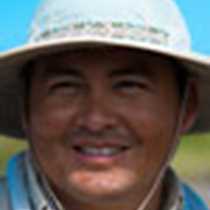North Seymour and Rabida Islands
After a pleasant night’s anchorage in the peaceful waters of North Seymour Island, we woke up with great enthusiasm. Flock of birds arriving to the island with the astonishing sunrise surprised us. North Seymour is a small island near Baltra Island that was formed by an uplift of the ocean floor. The island was named after an English nobleman, Lord Hugh Seymour. Even though it has an area of 1.9 square kilometers (0.73 sq. mi) and the highest point is 28 meters (92 ft) it is home to a large population of blue-footed boobies, swallow-tailed gulls and frigatebirds.
The morning outing was outstanding. Our hike took place on the coast of the island where sea lions welcomed us. Sally Lightfoot crabs colored the basaltic shoreline of this magnificent place. In addition, swallow-tailed gulls, which are the only nocturnal sea gull in the world, were arriving to their nesting ground after spending all night fishing offshore. The path led our explorers to the interior of the island. The dragons of Galápagos (land iguanas) were sighted while they were looking for shaded areas to avoid the hot tropical sun of the enchanted islands. Male frigatebirds, with their gular pouches inflated, delighted us with their melodies. On the sandy path a few blue-footed boobies were courting while others were incubating or rearing their chicks.
In the afternoon we found ourselves in a different location. Rabida Island, also known as Jervis Island, named in honor of the 18th-century British admiral John Jervis, has a red sand beach and a saltwater lagoon inhabited by waders and bachelor sea lions. The landscape was studded with small volcanic features along sharp slopes and cliffs. The first outing on this island was snorkeling. The rich waters of this place made the underwater realm unforgettable. Juvenile Galápagos sea lions joined us in our natural quest. White-tipped reef sharks, sea turtles and the only sea-going lizard in the world (marine iguanas) were spotted by our guests, who were delighted with the biodiversity that characterizes Rabida Island.
Later in the afternoon our explorers went ashore. In addition to lagoon birds and bachelor sea lions, our guests spotted pelicans, white-cheeked pintails ducks, boobies, Galápagos hawks and several species of finches. Today our explorers joined different activities such as hiking, snorkeling and kayaking. Our second day in this magical paradise provided us a wonderful and unforgettable day.




